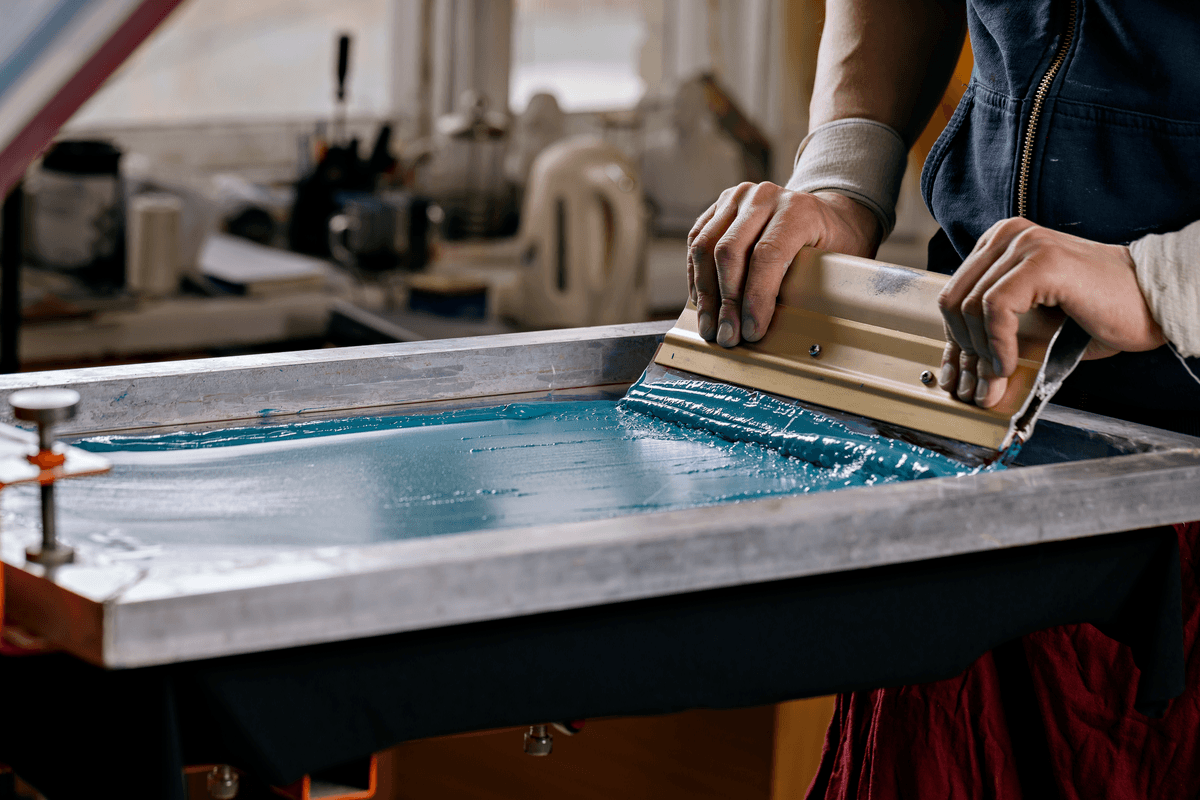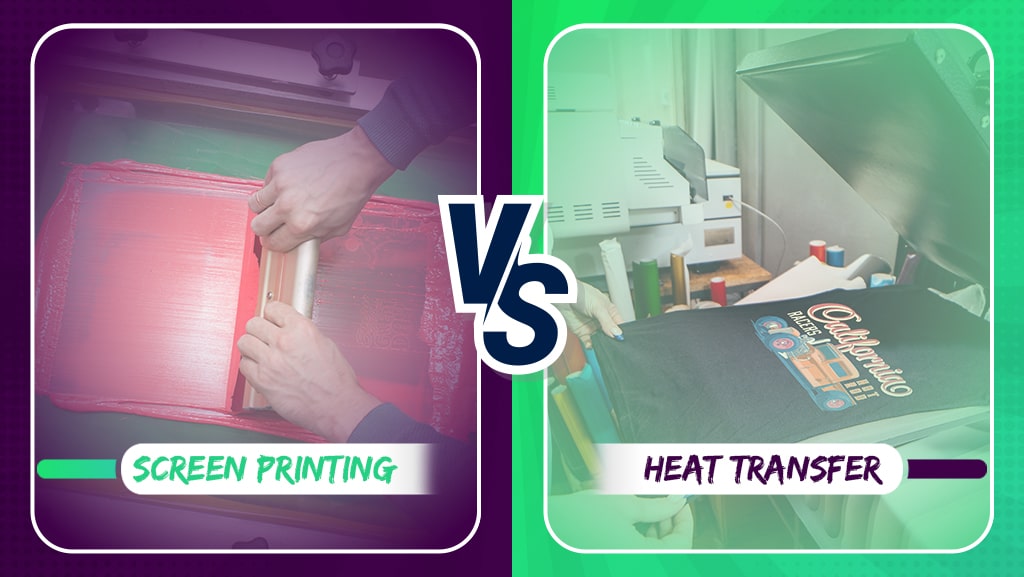Tx Tees for Dummies
Tx Tees for Dummies
Blog Article
Tx Tees for Dummies
Table of ContentsNot known Incorrect Statements About Tx Tees The Of Tx TeesTx Tees Fundamentals ExplainedTx Tees Can Be Fun For EveryoneThe Greatest Guide To Tx TeesGet This Report about Tx TeesTx Tees Fundamentals Explained
That brings your overall to roughly $1,900 gross and shipping. Include up other costs, like the variety of energies it requires to run the shop and the cost of ink and solution per design. t-shirt printing. Take the print below for instance. This is a one-color picture, so the cost of ink per shirt is approximately 20 cents.The solution should only be a few cents because you 'd just require to layer one display for this task. Usually, printers try to make up to 45% profit on a print job.

With DTF, you can print a handful of shirts, or simply one. Make use of the exact same calculator as the section above to compute just how much revenue you 'd make utilizing DTF transfers. Contrast the expenses and profits to whichever approach speaks ideal to your configuration and procedure. Both screen printing and DTF have their particular niches in the globe.
The Buzz on Tx Tees
The very best way to understand? Ask about and see what printing shop like yours are doing. screen printer. Attempt both out and see which you like better
When you're choosing what kind of printing approach to use for printing your artwork designs on your garments, it is essential that you know the differences between these two methods so you can optimize outcomes while minimizing costs. Screen printing is the most frequently made use of strategy for publishing layouts on fabrics.
DTG printing is also known as spot or direct to garment printing since it publishes just what is needed as opposed to making a screen as screen printers do. http://dugoutmugs01.unblog.fr/?p=3485. Display printing works by screen filler squeegee display printing ink screen mesh display, after that moving the picture to garment making use of warm and/or stress
The DTG printer utilizes special dye-sublimation inks that are used into a pre-designed picture by an electronic printing system. The inks end up being component of the fabric, enabling for vibrant shades and phenomenal detail. It's additionally referred to as place or direct to garment printing due to the fact that it prints just what is required rather of making a screen as display printers do.
Some Known Facts About Tx Tees.
It's much quicker - you can publish a fullcolor picture in minutes, as opposed to hours for screen printing. Second, there's no set up time or expenses entailed - you can publish any design you like, without having to produce a display initially. Third, there's no waste - because screen printers screen print one style each time, they have to screen each color independently.
The paper is really costly and can only be utilized when. Once it's printed on, it has to be disposed of. - The initial acquisition rate is less than the ahead of time financial investment of DTG printers- You can publish multi-color layouts one display each time as opposed to having to print each color separately like DTG printing.

The smart Trick of Tx Tees That Nobody is Talking About
However, rather than using screen mesh as display printers do, color sublimation printers use laser modern technology to transfer your pictures onto garments or paper. A heat process transfers the color from its solid-state straight right into the gas phase which subsequently fuses it onto fabric substrates when they are quickly warmed to high temperatures under high pressure.
Sublimation printing is eco-friendly. It uses less water than screenprinting, and due to the fact that it doesn't involve the use of hazardous solvents, it's risk-free for all sorts of apparel. The dye sublimation inks are also odor free when treated, unlike display printers that use hazardous chemicals during the screen printing process that leave an undesirable smell.
They additionally conserve cash on pricey tools like direct exposure devices given that dye sublimation printers don't require a UV exposure unit or a flash treatment stove that is typically used in display printing (t-shirt printing). What is direct to garment printing (DTG Printing)? DTG printing is a digital screenprinting process that prints straight onto textile making use of specialized inkjet printers
The Definitive Guide to Tx Tees
DTG printing supplies numerous advantages over traditional screenprinting, consisting of the capability to print photo high quality images, greater shade vibrancy, and the capability to print layouts on darker fabrics. DTG printers work by warming the textile ink till it develops into a gas. The gas after that permeates the textile, bonding with the fibers to produce a permanent print.

Display printers merely prepare their display after that begin publishing up until they run out of item or ink.- There is a vast array of experienced display printers all over the globe, which can be helpful for novices. - It's a slower process - display printers frequently need to await the ink to completely dry before they can print the following shade- Screen printers require manual labor, so there's a greater discovering curve and it takes longer to produce a top quality style- Screen printing isn't as exact as DTG printing, so you might get some "bleeding" of shades from one component of the image onto an additional if not done correctly.
The 10-Second Trick For Tx Tees
Rather description of utilizing screen mesh as display printers do, dye sublimation printers use laser technology to transfer your pictures onto garments or paper. A warmth process transfers the dye from its solid-state straight into the gas stage which in turn merges it onto textile substrates when they are swiftly heated up to heats under high stress.
Sublimation printing is environmentally friendly. It uses much less water than screenprinting, and due to the fact that it doesn't include making use of damaging solvents, it's secure for all sorts of apparel. The color sublimation inks are additionally odor-free when cured, unlike display printers that make use of unsafe chemicals during the display printing procedure that leave behind an undesirable odor.
They likewise conserve cash on pricey equipment like exposure devices since dye sublimation printers don't need a UV direct exposure unit or a flash cure oven that is normally made use of in display printing. What is direct to garment printing (DTG Printing)? DTG printing is a digital screenprinting process that prints directly onto material utilizing specialized inkjet printers.
An Unbiased View of Tx Tees
DTG printing offers several advantages over traditional screenprinting, consisting of the capacity to print photographic quality images, greater shade vibrancy, and the capability to print designs on darker textiles. DTG printers work by heating the fabric ink up until it becomes a gas. The gas after that penetrates the material, bonding with the fibers to create an irreversible print.
Report this page